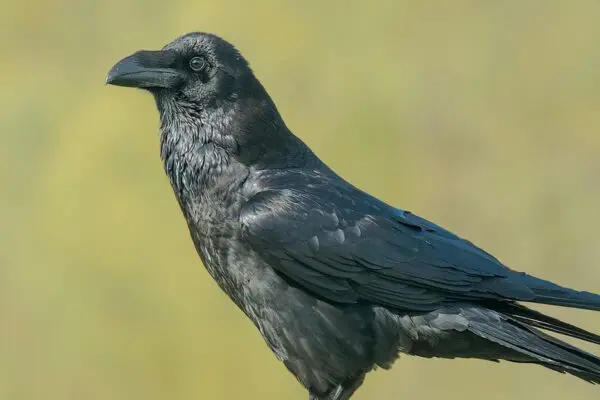Out of all the raptors, eagles are perhaps the most renowned and well-known. Approximately sixty different species of eagles may be found throughout the globe, mostly in the Americas and Asia, and many of them are significant cultural icons.
Each magnificent eagle begins its existence as a little eaglet or baby eagle. There will be a ton of images of young eagles throughout this post as it explores all there is to know about these birds!
What is the appearance of an eagle baby?
Thick, fluffy down that is either brown, grey, or white covers the bulk of newborn eagles. Their hooked, often eagle-like beaks are probably the only thing that would let you recognize them as an eaglet. Other than that, they resemble many types of juvenile birds in that they are little, fluffy, and have a dinosaur- or prehistoric-like appearance!
Additionally, the egg tooth—a specialized protrusion on the front of the beak used to puncture the eggshell—is extremely noticeable on baby eagles. Approximately one week passes after hatching for the egg tooth to erupt.
How large is an eagle baby?
In comparison to mature eagles, baby eagles are rather small. Even the biggest eagles in the world, like the enormous Harpy Eagle, have tiny eaglets when they are born.
After hatching, Bald Eagle chicks typically measure 10 to 13 cm (4 to 5 in).
What is the weight of eagle babies?
Even the biggest eagle species’ eaglets are only around 100 grams (3.5 oz) in weight.
The weight of golden eagle chicks has been measured to be between 105 and 115 g (3.7 and 4.1 oz). This weighs about twice as much as a duckling and three times as much as a newborn chicken. For birds of their mature size, baby eagles are still tiny and light.
What characteristics do young eagles have?
Even though they attain a notable size in around two months, juvenile eagles take a while to achieve complete maturity. The development of full adult plumage may take up to four years, by which time the young eagle will have grown to adult size and formed its own separate territory.
Most young eagles don’t change color until they are at least a year old, with mottled plumage and tufts of down giving them a brown or greyish tone. On their undersides, several species, like the Golden Eagle, have patches of white feathers that eventually fall off when they reach maturity.
It might take up to eight years for some species, like the White-Tailed Eagle, to achieve their mature plumage! Compared to the developmental timetables of other birds, this is rather unusual.
What is the name of a young eagle?
No matter what species they are, baby eagles are always referred to as eaglets. When a newborn eagle leaves the nest, it becomes a fledgling just like any other bird does.
What do you name a bunch of young eagles?
Although there isn’t a formal term for a gathering of baby eagles, they are often referred to as an aerie, soar, or convocation.
What do eagle pups eat?
Eagle pupae are weaned on raw meat from day one. Instead of regurgitating food, their parents just chop it up and feed the chicks as a whole. The mother will usually join in after a week or two, or if food is in short supply, but in the early days, the father is the one who hunts and feeds the chicks.
How are chicks fed by eagles?
When hunting, adult eagles will break up food with their beaks and give it straight to their babies. The chicks ingest full portions of meat rather than regurgitating them as other birds do. Eaglets are typically fed one to eight times a day; bigger chicks are more likely to survive to maturity because they are given preference over smaller ones.
What is the growth period of baby eagles?
Eagle pupae develop rapidly. After 10 to 14 weeks, many will have already achieved skeletal maturity when they are ready to fledge. Even while certain species take longer to attain adult size and weight, it only takes them a maximum of four to six months.
It takes a year or more for juvenile eagles to reach complete plumage development, and it might take up to eight years for some species, such as the White-Tailed eagle!
What percentage of eagle hatchlings make it to adulthood?
Up to a normal maximum of four eggs, the majority of eagle species only lay two. More than 50% of them are unlikely to survive, and the first-born eaglets are often the ones that make it.
This is because they often weigh more and are fed earlier. A couple of eagles may be able to successfully raise three babies if food is very plentiful, although this is still uncommon.
How do eagle eggs appear?
Eagle eggs often have splotches of light brown color and are white, sometimes with a hint of pink.
Larger eagle species may lay eggs as big as 7 to 7.6 cm (2.7 to 3″), yet they are usually unimpressive. This has some resemblance in circumference to a baseball or tennis ball. Eagle eggs are huge in comparison to eaglets, which are quite small.
What is the hatching period of eagle eggs?
Eagle eggs typically take 35 days to hatch, however, this varies according to the species.
It might take up to 45 days for golden eagle eggs to hatch. Before they hatch, harpy eagle eggs must incubate for an astounding 55 days. While this is above normal for birds, it is not comparable to the up to 85-day egg incubation period of a Wandering Albatross, for example!
When do eagles lay their young?
This differs depending on the species and the location. Egg-laying, for instance, usually begins around March or April at northerly latitudes, such as those found in the UK, North Europe, Canada, and the northern states of the USA. Nearer the equator, egg-laying may take place all through the early winter, perhaps as early as November.
While there are still peak seasons, certain eagles, like the Crowned Eagle, lay eggs throughout the year. Egg laying often happens year-round in areas close to the equator.
At what frequency do eagles lay eggs?
Even though the majority of eagles only produce tiny clutches of eggs annually, many eagle species have prolonged breeding seasons. A few species only lay eggs once every three to five years, such as the harpy eagle. Comparable in that they produce eggs every two to three years and are Crowned Eagles.
A baby eagle’s first flight date?
After about 10 to 14 weeks, baby eagles fledge. Although their parents will push them to take flight and leave the nest, it will take them at least two to three months, and in some cases much longer, for them to become more independent.
For instance, the lengthy reproductive cycle of Crowned and Harpy eagles is due to the fact that their eaglets spend up to nine or ten months with their parents.
When do young eagles depart from their nests?
Most eaglets fledge at around 14 weeks, however, it varies according to the species. That does not imply that they really depart from the nest, however. Eagle babies may be partially independent of their parents in as little as three to four months, although many remain with their parents until the winter or spring of the next year if they are born later in the season.
How much time do young eagles spend with their parents?
This differs throughout species. Taking the White-Tailed eagle as an example, it fledges quickly, usually within six weeks. However, it can take the young eagle up to three years to leave its family’s territory.
The Crowned Eagle is known to have an abnormally lengthy mating cycle, with the eaglets staying with their parents for at least 10 months and then returning to their home range for a while thereafter.
The eaglets, or young eagles, themselves are capable of hunting at around 16 weeks, not long after they fledge, but many species of eagles remain with their parents for a time.
How do young eagles develop hunting skills?
A newborn eagle’s natural hunting abilities grow rapidly, much like those of many other raptors. Although they do observe and learn from young parents, the majority of eagle species become proficient hunters shortly after they leave the nest.
Within three to four weeks, the eaglets will rip and consume their own food; their parents will just discard the carcass in the nest and let them continue.
Are nests reused by eagles?
Eagle nests are big, crowded, and often constructed very carefully over a period of up to six months. A big, sturdy, and secure nest that the eagles can strive to maintain throughout the year is obviously preferred, however, they can construct their nests in an emergency in a couple of weeks.
Because they are not opportunistic nesters, eagle couples take their time finding the perfect place to nest. Most eagle species will take fervent care of their nests, adding fresh materials on a regular basis, after they are established. Eagle nests may have remarkable widths of up to 3 meters (9 feet) and depths ranging from 3 to 5 meters.


![13 Birds with Big Mouths [Some are Really Scary]](https://birdsology.com/wp-content/uploads/2022/10/29-600x400.jpg.webp)

![22 Species of Red Birds [Images + IDs]](https://birdsology.com/wp-content/uploads/2023/03/49398054206_fb3c667a31_b-600x400.jpg.webp)

